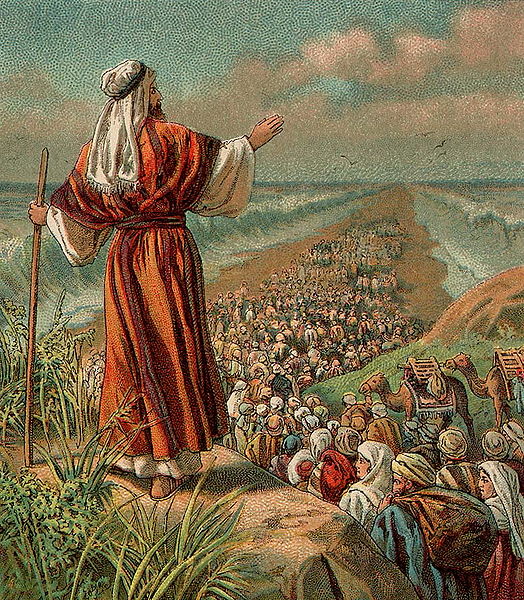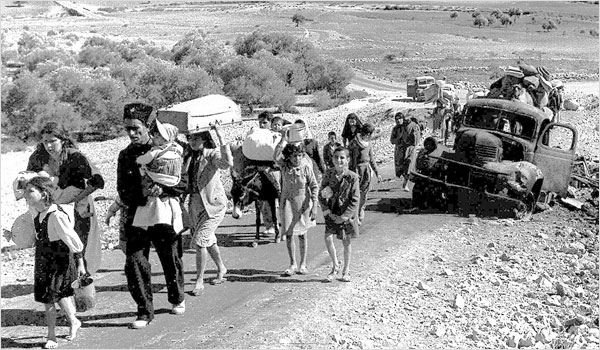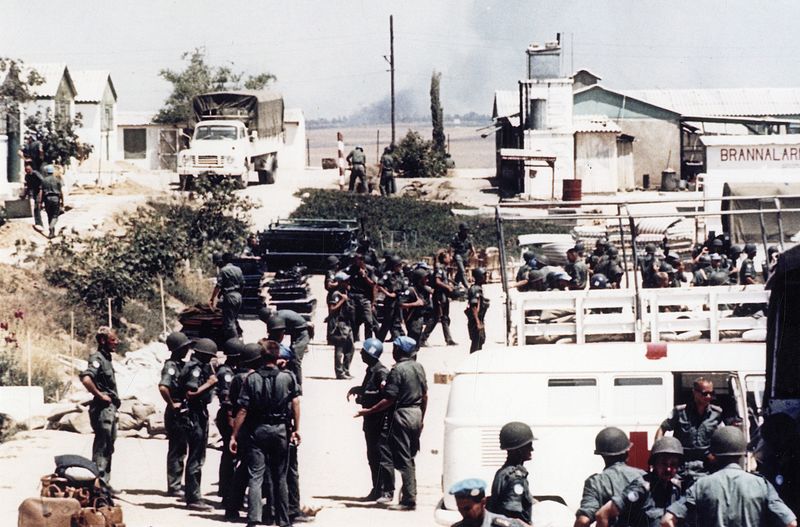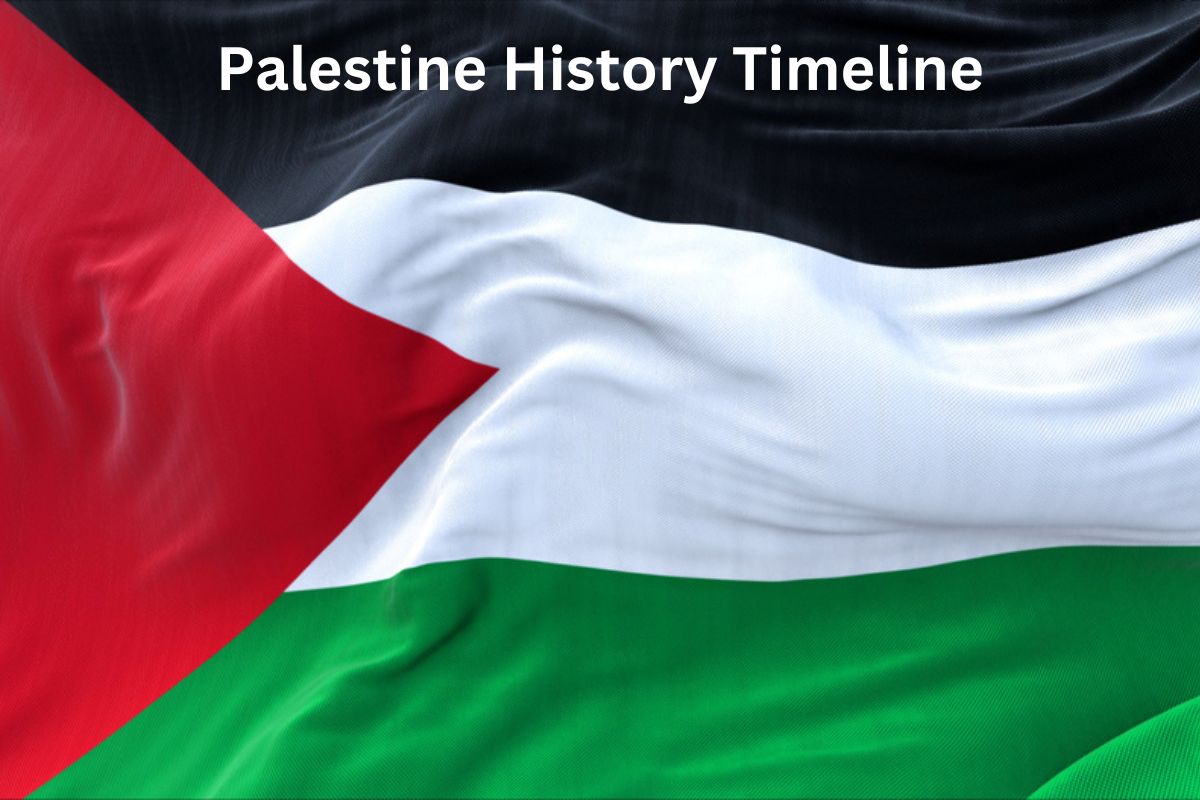Palestine’s history is a tapestry woven with ancient civilizations, religious significance, and modern conflicts.
From its roots in ancient times, including the Canaanites and Israelites, to the rise of major world religions, such as Judaism and Christianity, Palestine has played a pivotal role in the course of history.
In the 20th and 21st centuries, it has been marked by the establishment of Israel, multiple wars, and ongoing tensions, making it a region of global significance and concern.
| Period | Key Events |
|---|---|
| Ancient History and Pre-Christianity | Ancient History (circa 3000 BCE – 332 BCE): Canaanites, Egyptians, Israelites, and various empires. Hellenistic and Roman Period (332 BCE – 324 CE). Birth of Christianity (1st Century CE). Byzantine Era (324 CE – 636 CE). |
| Islamic Caliphates and Empires | Islamic Conquest (636 CE). Crusader Period (1099 – 1187). Mamluk and Ottoman Periods (13th Century – 1917). |
| 20th Century | British Mandate (1917 – 1948). UN Partition Plan (1947). Israeli Declaration of Independence (1948). |
| Post-1948 | Israeli-Arab Wars: Suez Crisis (1956), Six-Day War (1967), Yom Kippur War (1973). Palestinian Liberation Movement: PLO, Oslo Accords (1993). |
| 21st Century | Second Intifada (2000 – 2005). Hamas Takeover (2007). Gaza-Israel Conflicts. |
Timeline of Palestine History
1. Ancient History (circa 3000 BCE – 332 BCE):
This period encompasses a wide range of civilizations and cultures that inhabited the region known as Palestine over several millennia. Some of the earliest known settlements date back to around 3000 BCE, with evidence of the Canaanite civilization.
The Egyptians had control over parts of the region during different periods of their history. Palestine was sometimes a buffer zone or vassal state between the Egyptian and Hittite Empires.
Also Read: Facts About Israel
The Israelites, under leaders like Moses and Joshua, settled in the area, and this period is significant in the biblical narrative, including the Exodus and the conquest of Canaan.
Various empires, including the Assyrians and Babylonians, exerted control over Palestine during different times, leading to periods of conflict and displacement.

2. Hellenistic and Roman Period (332 BCE – 324 CE):
In 332 BCE, Alexander the Great conquered the region, introducing Hellenistic culture and influence.
After Alexander’s death, Palestine came under the control of his successors and later fell under Roman rule.
During the Roman period, the city of Jerusalem was expanded and transformed into a major center, but tensions arose between the Jewish population and Roman authorities, eventually leading to the Jewish-Roman Wars.
The Jewish-Roman Wars culminated in the destruction of the Second Temple in 70 CE and the dispersal of Jews, known as the Jewish Diaspora.
3. Birth of Christianity (1st Century CE):
The 1st century CE saw the emergence of Christianity, a monotheistic religion based on the teachings of Jesus of Nazareth.
Jesus’ crucifixion and resurrection are believed to have occurred in Jerusalem, making it a central location in the Christian faith.
Also Read: Palestine Facts
Early Christian communities developed in the region, and it became a significant center for Christian theology and scholarship.
The spread of Christianity throughout the Roman Empire had a profound impact on the history of Palestine and the broader world, eventually becoming one of the world’s major religions.
4. Byzantine Era (324 CE – 636 CE):
After the Roman period, Palestine came under Byzantine rule with its capital in Constantinople (modern-day Istanbul).
During this time, Christianity continued to flourish, and numerous churches, monasteries, and religious sites were built in the region.
The Byzantine Empire’s influence extended over the Holy Land, including Jerusalem, which remained a central religious destination for Christians.

5. Islamic Conquest (636 CE):
In 636 CE, the Rashidun Caliphate, led by Caliph Umar ibn al-Khattab, conquered Palestine from the Byzantines.
The Islamic conquest marked a significant turning point in the region’s history, as it introduced Islam and Arab culture to Palestine.
Jerusalem, with its religious significance for Islam, became an important city in the newly conquered territory.
6. Crusader Period (1099 – 1187):
The Crusader period began with the capture of Jerusalem by European Christian forces in 1099 during the First Crusade.
European Crusaders established the Kingdom of Jerusalem and other Crusader states in the region, leading to a period of Latin Christian rule.
This period saw both cooperation and conflict between Muslims, Christians, and Jews, and it left a lasting impact on the cultural and architectural heritage of Palestine.
In 1187, the Muslim forces, led by Salah ad-Din (Saladin), recaptured Jerusalem from the Crusaders, marking the end of the Crusader period in the region.
7. Mamluk and Ottoman Periods (13th Century – 1917):
After the Crusader period, Palestine came under the control of various Islamic dynasties. The Mamluks, who were of Turkic origin, ruled over the region from the 13th century until the early 16th century.
During the Mamluk period, Palestine experienced relative stability, with an emphasis on architectural and cultural developments.
In 1517, the Ottoman Empire, led by Sultan Selim I, conquered Palestine, bringing it under Ottoman rule. This marked the beginning of a long period of Ottoman control that would last for several centuries.

8. British Mandate (1917 – 1948):
During World War I, British forces, led by General Edmund Allenby, captured Palestine from the Ottoman Empire in 1917.
The League of Nations granted Britain the mandate to govern Palestine, which was formalized by the League’s mandate system in 1920.
Under British rule, Jewish immigration to Palestine increased significantly, leading to tensions between Jewish and Arab communities.
9. UN Partition Plan (1947):
In 1947, the United Nations proposed a partition plan for Palestine, recommending the division of the territory into separate Jewish and Arab states, with Jerusalem under international administration.
The partition plan was accepted by the Jewish leadership but rejected by Arab leaders, leading to conflict.
10. Israeli Declaration of Independence (1948):
On May 14, 1948, David Ben-Gurion, the head of the Jewish Agency, proclaimed the establishment of the State of Israel.
This declaration led to a war between the newly declared state of Israel and several Arab states, including Egypt, Jordan, Syria, and Iraq, resulting in the displacement of hundreds of thousands of Palestinians and the establishment of Israel.
The war is often referred to as the “1948 Arab-Israeli War” or the “War of Independence” by Israelis and the “Nakba” (catastrophe) by Palestinians.

11. Israeli-Arab Wars:
The period following the establishment of the State of Israel in 1948 was marked by a series of conflicts between Israel and its Arab neighbors.
Suez Crisis (1956): In response to the nationalization of the Suez Canal by Egyptian President Gamal Abdel Nasser, Israel, along with France and the United Kingdom, launched a military campaign to regain control of the canal. The crisis resulted in a U.S.-led diplomatic resolution and the withdrawal of foreign forces from Egypt.
Six-Day War (1967): In 1967, tensions between Israel and its Arab neighbors, particularly Egypt, Jordan, and Syria, escalated. Israel launched a preemptive strike, resulting in a swift victory. Israel occupied the Sinai Peninsula, the West Bank, East Jerusalem, and the Golan Heights.
Yom Kippur War (1973): In 1973, on the Jewish holy day of Yom Kippur, Egypt and Syria launched a surprise attack on Israel to regain territory lost in the Six-Day War. After intense fighting, a ceasefire was brokered by the United States and the Soviet Union.
12. Palestinian Liberation Movement:
The Palestinian Liberation Organization (PLO), founded in 1964 under the leadership of Yasser Arafat, emerged as a prominent political and military organization dedicated to the Palestinian cause.
The PLO sought to represent the Palestinian people and to gain international recognition for their rights.
The Oslo Accords, signed in 1993 between Israel and the PLO, marked a significant development in the peace process. They led to limited Palestinian self-rule in parts of the West Bank and Gaza Strip.
13. Oslo Accords (1993):
The Oslo Accords were a series of agreements signed between Israel and the PLO with the aim of achieving a peaceful resolution to the Israeli-Palestinian conflict.
The accords established the Palestinian Authority (PA) and outlined a process for the withdrawal of Israeli forces from parts of the West Bank and Gaza Strip, as well as the holding of elections.
While the Oslo Accords represented a significant step toward peace, the process faced numerous challenges, including disputes over land, settlements, and security.
14. Second Intifada (2000 – 2005):
The Second Intifada, also known as the Al-Aqsa Intifada, was a Palestinian uprising against Israeli occupation that began in September 2000.
The uprising was triggered in part by Ariel Sharon’s visit to the Temple Mount (known as Haram al-Sharif in Islam) in Jerusalem, a site holy to both Muslims and Jews.
The Second Intifada involved a series of violent clashes, suicide bombings, and Israeli military operations, resulting in a significant loss of life on both sides.
The conflict further strained Israeli-Palestinian relations and disrupted peace efforts.

15. Hamas Takeover (2007):
In 2007, the Palestinian militant group Hamas seized control of the Gaza Strip, effectively ousting the Palestinian Authority, which was dominated by Fatah, from power in the territory.
The takeover followed a period of political rivalry and armed clashes between Hamas and Fatah.
Hamas’s takeover of Gaza created a political division between the West Bank, controlled by the Palestinian Authority, and Gaza, controlled by Hamas. This division persists to this day.
16. Gaza-Israel Conflicts:
Since Hamas took control of Gaza, the region has been marked by periodic conflicts and military confrontations between Hamas and Israel.
These conflicts have often involved rocket attacks from Gaza into Israel and Israeli military operations in response.
Major conflicts include Operation Cast Lead (2008-2009), Operation Pillar of Defense (2012), and Operation Protective Edge (2014).
These conflicts have led to civilian casualties and widespread destruction in Gaza, as well as security concerns in Israel.
17. Recognition and Diplomacy:
Over the years, various countries and international organizations have recognized the State of Palestine, although its status and borders remain a subject of negotiation.
The United Nations General Assembly granted Palestine non-member observer state status in 2012.
Diplomatic efforts have aimed at finding a two-state solution to the Israeli-Palestinian conflict, with an independent and viable Palestinian state living side by side with Israel.
However, peace negotiations have faced numerous obstacles, including issues related to borders, refugees, security, and the status of Jerusalem.
